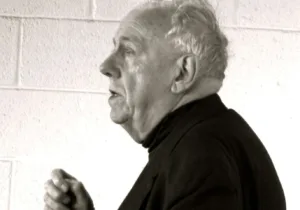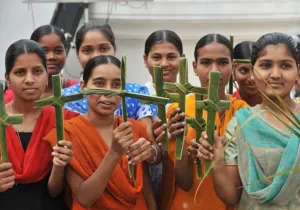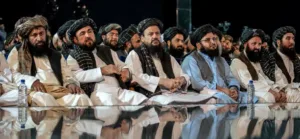As Motives Become Clear, the West should be Skeptical of Saudi Reforms
While a driving ban for women would be unthinkable in Western democracies, the 2018 lifting of such a ban in Saudi Arabia was a radical reform, given the opposition of the powerful Saudi religious establishment. As part of his Vision 2030 plan for modernization, crown prince Mohammad bin Salman (MBS) has been pushing many other reforms, such as making textbooks reflect greater tolerance, increasing access to Western entertainment, easing restrictions for women under the guardianship system, curbing the power of the religious police, and limiting judges’ individual discretion by codifying personal status law.
MBS touts these reforms as “liberalization,” but Saudi Arabia watchers say these changes are really a power grab: the monarchy is reigning in the Wahhabi religious establishment to solidify its power and stifle opposition.
While it is clear MBS is not taking steps towards democracy, the international religious freedom (IRF) community might be hopeful that this trend will significantly improve religious freedom in Saudi Arabia, as the Wahhabi establishment has been a major obstacle. While some of the reforms, on their face, increase religious freedom, the overall shift does not eliminate obstacles to religious freedom but rather alters them, by virtue of its repressive nature. The IRF community should remain critical and cautious of MBS and his “liberalization.”
First, though significant within the Saudi context, the reforms address only the tip of the iceberg of the kingdom’s religious freedom violations: the regime bans public practice of non-Islamic religions, considers apostasy a capital offense, persecutes Shia Muslims, and even targets Sunnis who express dissident views, including those affiliated with the Muslim Brotherhood. As such, Saudi Arabia remains one of the worst violators of religious freedom in the world, according to Pew’s Government Restrictions Index.
While MBS will surely push the reforms further, it would be foolish to expect them to culminate in a religiously free Saudi Arabia. Based on their respective attitudes towards religious freedom, Daniel Philpott characterizes the regimes of Muslim-majority countries in three ways: free, religious repressive, or secular repressive. Saudi Arabia is designated as a religious repressive regime for its enforcement of its interpretation of Islam using government power, such as restricting civil rights and liberties.
MBS’ reforms are steps—albeit small—away from religious repression. However, these steps away from religious repression are not oriented toward freedom, but rather in the direction of secular repression. In such a scenario, the government, seeking modernization, attempts to control Islam in a way that violates religious freedom.
This may appear to be an improvement from religious repression. Philpott notes that Western powers often believe this because they overlook free Muslim-majority countries that base religious freedom in Islamic tradition. Instead, viewing secular repression as the only alternative to religious repression, the West supports the former as the first step towards democracy.
Of course, many regimes exploit this Western focus on secularism to secure support. For example, the United Arab Emirates (UAE), though designated as a religious repressive regime, utilizes the secular repressive strategy of promoting “moderate Islam” and “tolerance” to win support; it is often lauded by the West, despite the absence of political freedoms or civil rights.
Though it remains significantly more restrictive than the UAE, Saudi Arabia also employs this rhetoric, marketing autocracy as the only path to liberalization and the reforms as an increase to religious freedom. While the West hasn’t bought the narrative, it may become more tempting to believe as MBS continues to push his “liberalizing” reforms and limit the power of the Wahhabi establishment.
However, Philpott argues that secular repressive regimes tend to “breed repression” and “feed into the problem,” rather than lead to democracy.
In fact, such regimes often violate religious freedom as they attempt to manage Islam, according to Philpott. For example, the government detains, mistreats, and potentially executes religious dissidents, justifying the repression as necessary to counter extremism. While the West has long pushed Saudi Arabia to control sources of extremism within its borders, this repression goes far beyond that, targeting peaceful, non-radical dissidents, and giving impunity to far more radical clerics for their loyalty.
The United States Commission on International Religious Freedom (USCIRF) highlights these violations of the universal right to religious freedom as evidence that reforms in Saudi Arabia do nothing to make religious freedom a right. The kingdom merely utilizes religious freedom as a political privilege withheld from dissidents and subject to the interests of the monarchy, easily removable should the political conditions change.
The monarchy’s control over religious freedom might make international pressure a more effective tool for the IRF cause, as independent doctrinal obstacles are being replaced with interdependent political ones. However that pressure is currently weak. Human rights concerns have once again fallen to the wayside in the face of geopolitical interests, despite Biden’s campaign promise to the opposite. Religious freedom, in particular, often falls to the bottom of the West’s agenda.
It would be a feat even to strengthen tolerance in Saudi Arabia to the level of the UAE, which Pew ranks as more repressive than the majority of the world’s countries. Saudi Arabia’s higher cultural religiosity creates greater bottom-up obstacles and, even as MBS reigns in the religious establishment, its historic political and religious power cannot be completely removed overnight.
More importantly, no amount of international pressure will push the increasingly powerful monarchy to transform religious freedom from a privilege to a right. Such a right is a tall order for any authoritarian regime, particularly one whose greatest source of legitimacy is religion. Wahhabi conservatives have been the force most able to influence and threaten the monarchy, while influential members of the reformist Sahwa Movement, which combined Wahhabism and the Muslim Brotherhood’s political ideology, were an existential threat in the eyes of the regime during the 2011 Arab Spring. Even if MBS is successful in his efforts to cripple this threatening power of the establishment, a right to religious freedom will always be far too risky to cede.
In their analysis of the religious reforms under MBS, Farouk and Brown argue that, while tempting, it is unhelpful to ask who the winners and losers are in this shift. Rather, they claim, we should seek to understand the situation so that we can respond well. To that end, IRF advocates need to remain wary: while the shift away from religious repression may be positive on its face, the shift towards secular repression will inevitably bring a host of new obstacles for religious freedom in Saudi Arabia.






 Live in the DC area? Sign-up for Providence's in-person events list!
Live in the DC area? Sign-up for Providence's in-person events list!